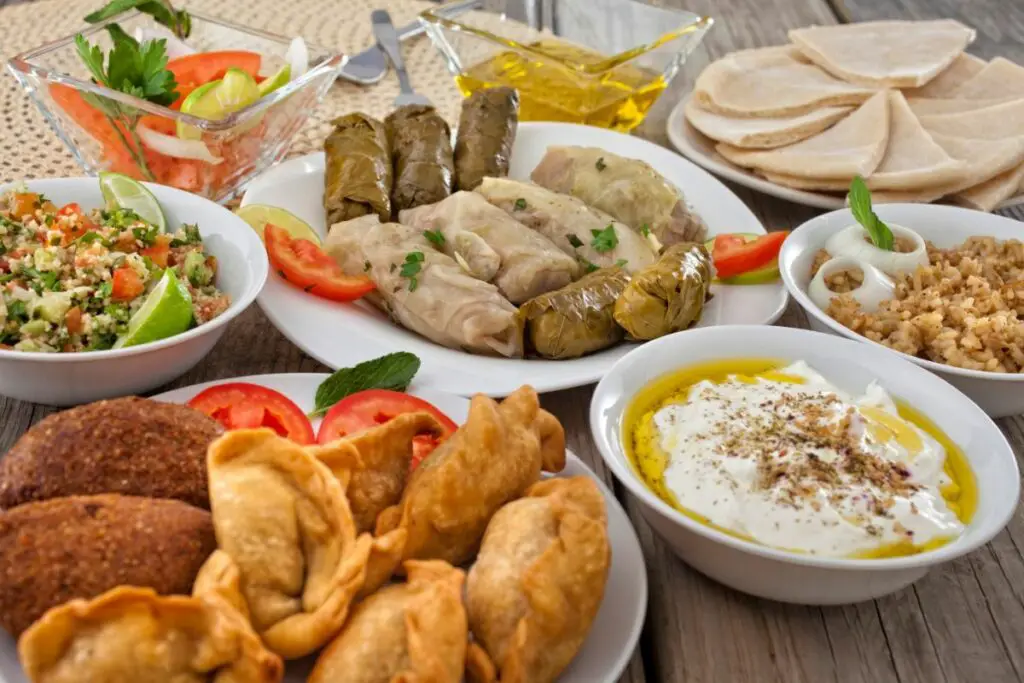When we talk about food found around the world, we tend to talk about it from different countries. Sichuan food comes from the Sichuan province in China, Malay food comes from the regions of Malaysia, Soul food comes from the African-American communities of the southern United States, and so on.

While all this is fairly easy to understand, there are certain types of food that are from a huge region that encompasses many countries or cultures without being specific. This is the case with Mediterranean food, which can be hard to define or encapsulate due to the size of the area it comes from.
So, where is Mediterranean food from? What countries’ cuisine is included in Mediterranean food? And what defines Mediterranean food? In this article, we cover Mediterranean food to the full extent we can and give you a complete rundown of it.
Where Is Mediterranean Food From?
Mediterranean food is a cuisine that comes from areas that surround the Mediterranean Sea and the cultures within that area. These include regions like Southern Europe, the Middle East, and North Africa.
Some of these areas incorporate whole countries, like Greece or Albania, others simply incorporate parts of countries, like the Provence region of France, and some are not on the Mediterranean Sea, but are still included, like Portugal.
These areas, although culturally and geographically distinct, have some things in common that make people group these foods into the same category of Mediterranean food.
One of these is the climate of the area. This climate is distinct from the areas further north, by being drier and hotter, and distinct from areas further south, by being wetter and cooler.
Although there are a few places on earth with this type of climate – like the west coast of North America and the southern coast of Australia – the climate is most widespread and continuous in the areas of the Mediterranean basin.
The other thing that makes Mediterranean food recognizable as such is that although the cultures around the area are distinct, they are so intertwined by trade and history that you cannot tell their individual stories without also mentioning the other cultures of the area.
This has not only affected each of the cultures, but their food, and while all of them have unique dishes to that culture, they also have variations of dishes that every other Mediterranean culture has as well.
What Defines Mediterranean Food?
Mediterranean food is hard to define in the way we would define other countries’ foods, as the region is enormous and incredibly diverse. However, there are a few measures that we can use. The first is that of the Mediterranean Triad.
The Triad are the three core ingredients of most Mediterranean cooking, which are: olives, wheat, and grapes. If you look at most dishes in Mediterranean cooking, you will find that almost all of them will use a combination of these ingredients in some capacity throughout a meal.
For example, in an Italian Pesto Genovese dish with a glass of wine, the pasta is processed wheat, the sauce uses olive oil, and the wine is made from fermented grapes.
This can even be seen in the economies of these regions, with 95% of the world’s olives being produced in 10 countries, all of which reside within the Mediterranean basin.
Similarly, 37% of the worldwide grape production happens within the borders of the Mediterranean, and although worldwide wheat production is spread among other countries as well, it is certainly very high in the Mediterranean.
Other ingredients that are used throughout the Mediterranean are tomatoes, lamb, or mutton, and seafood also has significance, as well as the prevalence of fresh salads alongside a main course. However, one item that has to make an appearance in most dishes is herbs.
Herbs are one of the cornerstones of flavor in Mediterranean cuisine, with the idea that they give fresh, simple ingredients incredible and pronounced flavors.
The three herbs that you will see throughout these cultures’ foods are basil, rosemary, and Marjoram. While olives, wheat, and grapes are the triad, herbs are the unsung fourth member of this select club.
Most Well-Known Mediterranean Food Cultures

As we stated earlier, there are many cultures whose food falls under the category of Mediterranean cuisine. While they all are a part of this category, many of them have a distinct and uniquely beautiful way of preparing and serving their food:
Italian
Probably the most widespread and famous of the Mediterranean cuisines, Italian dishes are famous for their use of pasta, olive oil, and the Italian people’s love of wine.
There are many things to love about Italian cooking, from the selections of each dish to the unique food choices per region.
Greek
Greek cuisine uses such a variety of vegetables and grains that we cannot possibly cover them all. Courgettes and eggplants are particularly well-used, along with lamb, fish, and a selection of fermented yogurts.
Croatian
When talking about Mediterranean food from Croatia, we usually mean the narrow strip of coastline along the Adriatic Sea. This coastline is a narrow strip between the mountains and the sea, especially in the south.
In front of it are the numerous Croatian islands, known for their seafood and crystal clear beaches.
Croatian cuisine is as varied as the landscape at this point of the Adriatic. From mountain cheese to fresh octopus, you will find everything here.
Maghreb
The regions of the Maghreb include Algeria, Libya, Morocco, and Tunisia. The most famous food from this region is couscous, a wheat-grain semolina, that is used in many of their dishes. They also love to use the spice harissa, lemons, and dried apricots.
Levantine
The region of the Levant today includes Lebanon, Syria, Israel, Cyprus, and Jordan. They make great use of pulses and beans, especially to make sauces like hummus, and their wheat of choice is normally bulgur wheat which is served on the side of a variety of heavily seasoned and delightfully tangy foods and sauces.
Conclusion
Mediterranean food is food from the countries and cultures around the Mediterranean Sea. It is defined by the climate of the regions that eat the food from these areas and the unique foods that grow within these regions.
While the entire category of Mediterranean cuisine is broad and diverse, they are all united in these two distinctions and the cultures that have made these foods close throughout history.
It is a true delight to have Mediterranean food and if you have not tried it before, we would recommend doing so in the future.
- The Top Restaurants Specializing in Truffle Dishes - August 10, 2023
- Truffle Panna Cotta: A Decadent Dessert Recipe for Truffle Lovers - August 7, 2023
- Truffle Scrambled Eggs: A Luxurious Breakfast Delight - August 7, 2023









